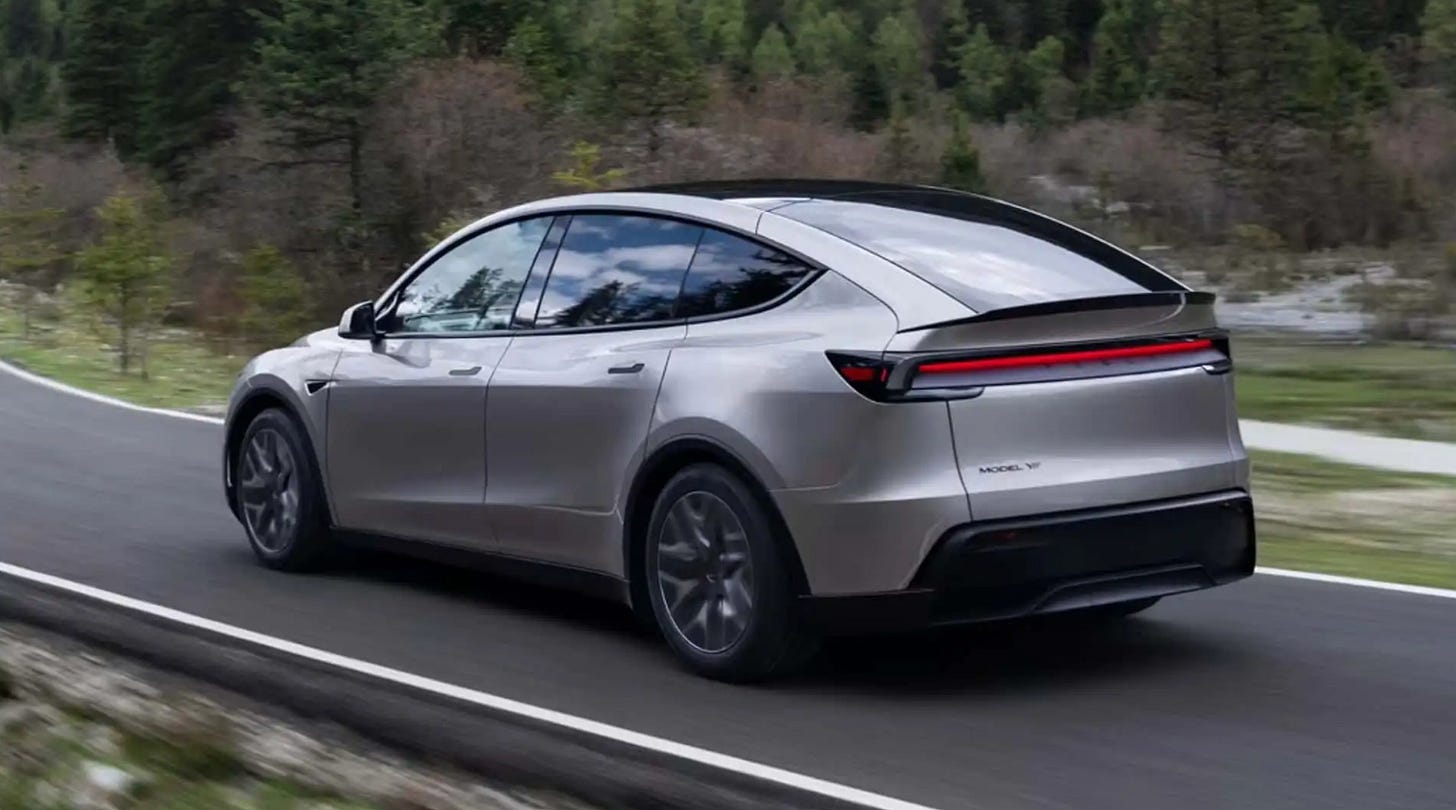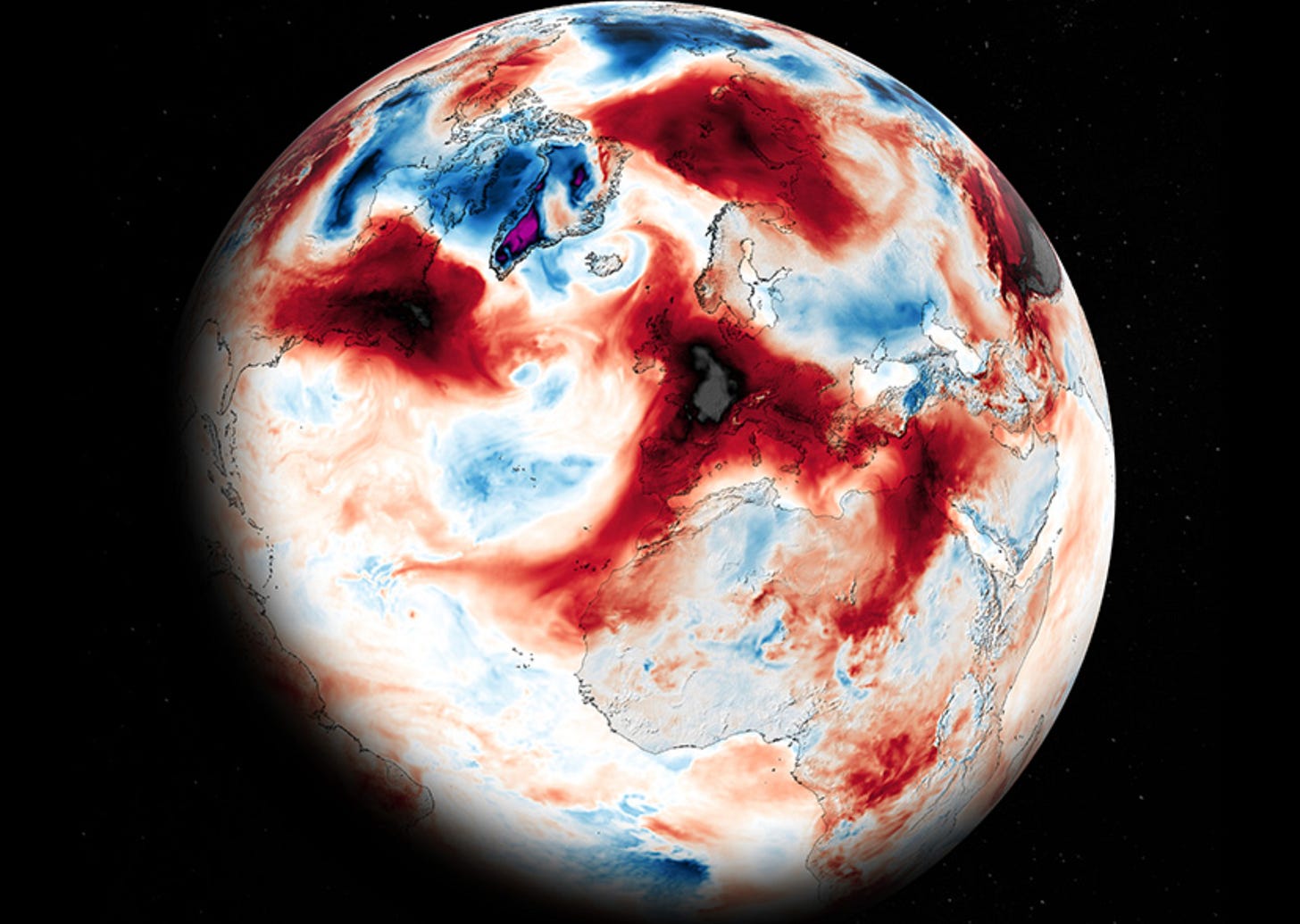EV sales surge in July ahead of Trump's cuts to subsidies
Plus, how oil interests torpedoed the latest round of global plastics talks
In today’s edition:
— The great EV sales rush of 2025 is on, thanks to expiring federal tax credits next month
— Global plastic talks have failed again. Why oil countries are to blame.
— Is the world about to hit ‘peak water’? Video documentary.
— Southern Spain ravaged by wildfires, forcing evacuations and hammering tourism
— U.S. Dept. of Energy fast tracking 11 nuclear projects
Summer sale alert!
For the rest of this month, leading up to Labor Day in the U.S., Callaway Climate Insights will be available to new subscribers for less than $5 a month for the first year. Take advantage now to get the best of our daily global climate analysis. Please subscribe with our special Labor Day sale offer.

The great EV sales rush of the summer of 2025 is on, ahead of the Sept. 30 deadline when former President Joe Biden’s federal tax credits are halted. Looking at some of the price cuts coming from EV makers looking to ditch inventory, it’s likely they will go on beyond the deadline as well.
While auto experts expected sales to rise as people try to grab an EV before President Donald Trump ends the tax credits and other subsidies at the start of October, the price cuts being offered by some automakers are astounding experts. Some EVs can be leased for as little as $100 a month, according to Bloomberg, citing Edmunds.com. And EV models represent half of the vehicles on Edmunds lists of the best lease deals available this summer.
Total EV sales in July topped 130,000, up 19% year-over-year, but more than 26% over sales in June, when Trump’s tax bill passed with the incentive cuts, according to data from Cox Automotive. As dealerships are eager to dump as much inventory as possible before October, we can expect prices to continue to fall in the next month, and likely even past the date as dealers push to clean out their lots.
One sign of more price cuts to come is that Tesla TSLA 0.00%↑ this week introduced a six-seat Model Y L in China for $47,180 (photo above). Chinese competitors, such as BYD, offer some products for as low as $10,000.
As prices continue to come down, and battery charging becomes more advanced, tax credits and subsidies will become less important. For now though, the ending of the subsidies has caused just the opposite of what the White House as intended — a run on electric vehicles. We expect EVs to finally break through the 10% of U.S. auto ownership market sometime in the next few months.
If you have ideas or suggestions for us, contact me directly at
dcallaway@callawayclimateinsights.com.
Follow us . . . .
Twitter | LinkedIn | Facebook | Instagram
Tuesday’s subscriber insights
Plastic stocks rise as oil companies torpedo global production deal
A note to our free subscribers: You’ve hit our limit for free content in this email. Please take advantage of our Big Labor Day Sale and lock in the best rate for a whole year. We appreciate your support.
. . . . Shares of large U.S. plastics companies are on the rise after the latest round of global talks to introduce production cuts ended in failure late last week as countries with large oil interests again successfully blocked an international deal.
Like with international climate talks, the biggest oil polluters, including the U.S., India, Russia, and China, have been able to stand together to prevent any meaningful deal with plastic, in this case to limit soaring plastic production worldwide.
Shares of companies such as Dow Inc. DOW 0.00%↑, Chevron CVX 0.00%↑ , Exxon XOM 0.00%↑ all rose after the talks collapsed. International companies such as Formosa Plastics (TW:1301) in Taiwan and BASF (BASF) in Germany also rose.
Oil is widely used in the production of plastics, making any international efforts to curb production a second front for fossil fuel companies against environmental attacks on their businesses. Meanwhile, about 460 million tons in new plastic products, particularly single-use plastics, are being added each year, according to the Organization for Economic Co-operation and Development (OECD).
The failed talks over the past two weeks in Geneva were the latest round to collapse without a production deal, following another set of unsuccessful efforts in Korea late last year. At this point, it’s time for global negotiators to think of new ways to reach a deal. As with climate, it seems impossible that any sort of unanimous deal can ever take place in a room where the biggest players are unprepared to give in.
Editor’s picks: When will we run out of water?; plus, energizing nuclear plans
Watch the video: For generations, we’ve been pumping water out of the ground assuming it would last forever. But it’s running out. And a new study shows how global “peak water” could be just around the corner. In this episode of Weathered from PBS Terra, host Maiya May reviews when and where peak water is expected to hit.
Feds fast-track nuclear pilot program
The U.S. Department of Energy will expedite work on 11 projects in a nuclear reactor pilot program, with the goal of having three of the projects fully developed by July 2026. Inside Climate News reports the agency’s plans to fast-track the projects through the development process has some nuclear energy experts worried about the feasibility and safety of the plan. The first announcement in June said the program will “help unlock private funding and provide a fast-tracked approach to enable future commercial licensing activities for potential applicants.” Inside Climate News reports some experts say the new program stretches historical regulatory boundaries for the development of nuclear reactors for commercial use and they are concerned about a lack of transparency in the federal agency. Typically, the Department of Energy can develop nuclear reactors for research on federal land without a license from the Nuclear Regulatory Commission, but the projects must go through the commission for commercial use. The report notes at least one of the companies in the pilot program plans to develop its reactor and later apply to the Nuclear Regulatory Commission for a license.
Data driven: Fire and heat scorch Europe
Europe suffers ‘a massive anticyclonic blockage’
. . . . Europe, especially the Mediterranean basin, is facing severe heatwaves and large-scale wildfires this summer. Temperatures are rising well above 104°F in many areas, particularly in southern France, the Balkans and Turkey. The current scorching temps follow other recent heatwaves on the European continent. Spain, especially, is suffering: Large parts of the country are facing wildfire evacuations and tourism is being hit hard. Other countries sweltering under waves of heatwaves include Portugal, Italy, Greece, France, Bulgaria, Hungary and Turkey. Outdoor events and public venues have been closed and school schedules changed. A report from PBS.org cited the U.K.’s Carbon Brief as predicting this year will be the second- or third-warmest year on record. Europe’s land temperatures have risen about 2.3°C above pre-industrial levels, nearly twice the global rate, intensifying heat waves, says the EU’s Copernicus climate service. EU data show areas burned by wildfires across the continent are far above the long-term average this summer, with major outbreaks in Spain, Portugal Greece since late June. The persistent hot weather is being blamed on a massive anticyclonic blockage. Blocking anticyclones redirect the eastward movement of cyclones and low-pressure areas and can lead to more extreme weather events.



